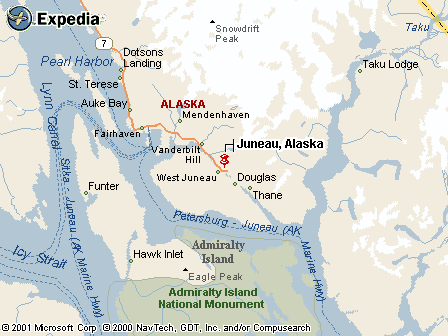|
|
Canku Ota |
|
|
(Many Paths) |
||
|
An Online Newsletter Celebrating Native America |
||
|
November 16, 2002 - Issue 74 |
||
|
|
||
|
'In-Your-Face College' Spurs Native Students |
||
|
by Julia O'Malley Juneau Empire
|
||
|
credits: art Generations
by Barbara Lavallee
|
 Juneau
-- Tlingit ancestors paddling cedar canoes off the shores of Auke Village
did not greet each other with the phrase "What's up, dawg?" Juneau
-- Tlingit ancestors paddling cedar canoes off the shores of Auke Village
did not greet each other with the phrase "What's up, dawg?"
But at least 30 Tlingit teenagers in Juneau can rattle off that and two dozen traditional phrases in Tlingit, thanks to a language and culture class they attend weekly as part of the Early Scholars program. The program for Alaska Native students has been at Juneau-Douglas High School for eight years. It was started by school counselor Frank Coenraad and was modeled after programs for at-risk minority students in inner-city Los Angeles. About 30 students in grades nine to 12 are invited to participate, based on their grades and teacher recommendations. The program focuses on cultural identity and achievement and was developed specifically in response to low rates of high school graduation and college attendance for Alaska Native youths. Paula Dybdahl, the high school's history teacher, who oversees the Early Scholar class, said she has seen statistics that indicate only 20 percent of Alaska Native boys who enter high school graduate. Of that, she said, only 11 percent go to college. Young Native men in Alaska are as likely to go to college as they are to go to jail, she said. About 19 percent, 341, of the nearly 1,800 students at Juneau-Douglas are Alaska Native. Roughly 17 percent of Alaska's population is Alaska Native. "We (educators) lose a lot of kids," Dybdahl said. "Someone somewhere is not taking care of them. Here in our class we have 30 or 35 kids we've maintained a connection with." The program is at capacity. Expanding it would take a greater commitment of Juneau School District resources, Dybdahl said. Students remain in the Early Scholars class with Dybdahl for four years. They learn about history and government as well as Tlingit culture. They spend one class a week at the University of Alaska Southeast, which helps them become accustomed to a college environment. "We call it in-your-face college," Coenraad said. "We just keep pushing the secondary education." The program has been successful, Coenraad said. Most Early Scholars seek higher education, from four-year college to vocational training school, he said. Often they are the first generation in their family to continue education after high school. The median grade-point average of students in the program is nearly one point higher, at about a B average, than the C average of Alaska Native students who are not in the program, Coenraad said. On a recent Wednesday, 30 students gathered in the Early Scholars classroom in the basement of the Egan Library at the university. To begin their class, Hans Chester, a college student, asked them to play a game of Simon Says. All directions were in Tlingit. Students stood and tried to follow his requests, placing their hands on their heads or pointing at the walls or ceiling. When a student missed a direction, he or she would sit down, drawing a chorus of giggles. Aaron Katzeek, 16, said the environment in the classes is different because only Alaska Native students are in the room. The all-Native environment makes it easier for students to feel comfortable participating, he said, and when they participate they learn more. "In most classes there are usually only two or three Alaska Natives, and we are usually quiet. In our class, everybody is loud and we have fun," he said. Katzeek said one of the most important things about Early Scholars is the cultural component. "We need this class so we learn our backgrounds and the traditions of what our parents have done before," he said. Chellsy Milton, 17, can introduce herself in Tlingit, saying both her English and Tlingit names, her clan, moiety and house. She agreed that spending time with other Native students who are college bound makes it easier to imagine herself at college. "It keeps you on track," she said. "I know that I can always go to Ms. Dybdahl's class and get help. It is like a second home." Coenraad said the language and cultural piece of the program is essential because it contributes to self-esteem and helps students relate to significant adults -- elements that have been proven to lead to student success. "Heritage is a piece of the message that is about who these kids are," Coenraad said. "It elevates the kids to who they are in the community."
|
|
|
||
|
|
||
| Canku Ota is a free Newsletter celebrating Native America, its traditions and accomplishments . We do not provide subscriber or visitor names to anyone. Some articles presented in Canku Ota may contain copyright material. We have received appropriate permissions for republishing any articles. Material appearing here is distributed without profit or monetary gain to those who have expressed an interest. This is in accordance with Title 17 U.S.C. section 107. | ||
|
Canku Ota is a copyright © 2000, 2001, 2002 of Vicki Lockard and Paul Barry. |
||
 |
 |
|
|
The "Canku Ota - A Newsletter Celebrating Native America" web site and its design is the |
||
|
Copyright © 1999, 2000, 2001, 2002 of Paul C. Barry. |
||
|
All Rights Reserved. |
||
